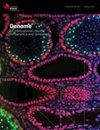perfoliata的翻译结果:perfoliata的翻译结果:perfoliata的翻译结果:perfoliata的翻译结果:perfoliata
IF 2.3
3区 生物学
Q3 BIOTECHNOLOGY & APPLIED MICROBIOLOGY
引用次数: 0
摘要
何首乌科是一个大的草药家族,包括许多用作传统中药的物种,如通叶Persicaria perfoliate。在这里,我们使用Illumina测序技术对产气荚膜虫的完整cp基因组进行了测序,目的是提供一种便于准确鉴定的方法。注释后,将通孔草的cp基因组与苦地金、Persicaria chinensis、苦地金和多花Fallopia进行了比较。perfoliata的完整cp基因组长度为160730bp,包含12927bp的小单拷贝(SSC)区、85433bp的大单拷贝(LSC)区和62370bp的一对反向重复(IR)区。共注释了131个基因,包括8个rRNA基因、34个tRNA基因和84个蛋白质编码基因。鉴定出四十二个简单序列重复序列和五十五个重复序列。突变热点分析表明,可以选择5个基因(matK、ndhF、ccsA、cemA、rpl20)作为分子标记的候选基因。此外,系统发育分析表明,所有的何首乌科物种都形成了一个单系分支,而背风木犀与中国木犀的亲缘关系最为密切。这项研究为准确鉴定产叶P.perfoliata提供了有价值的分子信息,并有助于其开发和应用。本文章由计算机程序翻译,如有差异,请以英文原文为准。
The complete chloroplast genome of Persicaria perfoliata and comparative analysis with Four Medicinal Plants of Polygonaceae.
Polygonaceae is a large family of medicinal herbs that includes many species used as traditional Chinese medicine, such as Persicaria perfoliate. Here, we sequenced the complete cp genome of P. perfoliata using Illumina sequencing technology with the purpose to provide a method to facilitate accurate identification. After being annotated, the cp genome of P. perfoliata was compared with Fagopyrum tataricum, Persicaria chinensis, Fagopyrum dibotrys and Fallopia multiflora. The complete cp genome of P. perfoliata is 160,730 bp in length, containing a small single copy (SSC) region of 12,927 bp, a large single copy (LSC) region of 85,433 bp and a pair of inverted repeats (IR) regions of 62,370 bp. A total of 131 genes were annotated, including eight rRNA genes, 34 tRNA genes and 84 protein-coding genes. Forty-two simple sequence repeats and fifty-five repeat sequences were identified. Mutational hot spots analyses indicated that five genes (matK, ndhF, ccsA, cemA, rpl20) could be selected as candidates for molecular markers. Moreover, phylogenetic analysis showed that all the Polygonaceae species formed a monophyletic clade, and P. perfoliata showed the closest relationship with P. chinense. The study provides valuable molecular information to accurately identify P. perfoliata and assist in its development and application.
求助全文
通过发布文献求助,成功后即可免费获取论文全文。
去求助
来源期刊

Genome
生物-生物工程与应用微生物
CiteScore
5.30
自引率
3.20%
发文量
42
审稿时长
6-12 weeks
期刊介绍:
Genome is a monthly journal, established in 1959, that publishes original research articles, reviews, mini-reviews, current opinions, and commentaries. Areas of interest include general genetics and genomics, cytogenetics, molecular and evolutionary genetics, developmental genetics, population genetics, phylogenomics, molecular identification, as well as emerging areas such as ecological, comparative, and functional genomics.
 求助内容:
求助内容: 应助结果提醒方式:
应助结果提醒方式:


